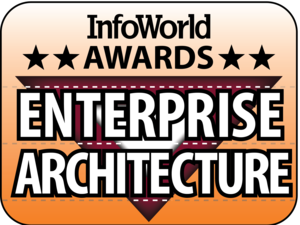Allstate Insurance: Enabling business innovation
Property and casualty insurance in the United States is a relatively low-margin business. To compete in this market, the best strategy is to create differentiated products and services for unique customer segments, each with a customized value proposition. This requires both great service and innovative products.
Allstate Insurance realized that in order to grow its business, it needed to transform IT from a "fix and run" organization to a group focused on ways to "run and grow."
To accomplish this, Allstate named a Chief Innovation Officer to build and lead a team creating, evaluating, and developing new products and services for customers. Working closely with each business unit and an Innovation Execution group within Enterprise Architecture Innovation draws on both data-driven analytics and customer insights to create new offerings, enhance existing ones, and coordinate activity across the enterprise.
Prior to the creation of the Innovation Execution group, innovation chiefly derived from the ad-hoc implementation of ideas. Even when prototypes showed promise, they could not easily be integrated back into production environments. Today the EA practice's Innovation Execution activities target both business and IT, enabling innovation through the following methods:
- Building "more real, more quickly," by pipelining business ideas through the systems development lifecycle faster
- Uncovering potential roadblocks very early to minimize project risks
- Providing development teams with working, proven prototypes for reference
- Ensuring migration to production is streamlined without sacrificing quality or engineering rigor
The EA practice has adapted in several ways. Key architects with extensive development expertise are tapped to lead innovation projects, while solution architects now work on projects using both waterfall and agile methodologies. They are always part of a cross-functional team for innovation projects.
In addition, EA and the Innovation Execution teams proactively engage the IT operations teams early. This devops-style approach cultivates a collaborative commitment to successful implementation and fosters a much better understanding of nonfunctional requirements and operational needs.
The Innovation Execution team builds on the classic EA deliverables -- including application road maps and architecturally scalable designs -- by providing prototypes, market tests, and the assessment of high-risk portions of large complex systems.
The primary technology challenges come from keeping pace with new trends, including:
- Mobile development and architectural changes, such as responsive UI design
- Telematics and the connected car -- and their impact on such offering as usage-based insurance
- Big data analytics capabilities with open source tools
Going forward, the Innovation Execution practice within EA will expand from its three core functions – proof-of-concept projects, market tests, and fast business enablement -- to create an advanced R&D team. This team will focus on key capabilities and platforms that are two to three years out. They will also develop partnerships with key businesses and with the technology and innovation departments of leading universities.
Stakeholders see a new partner in EA thanks to the Innovation Execution practice, which not only supports their IT development teams, but can also assist in making their strategic goals and plans a reality by providing actionable solutions in significantly less time.









